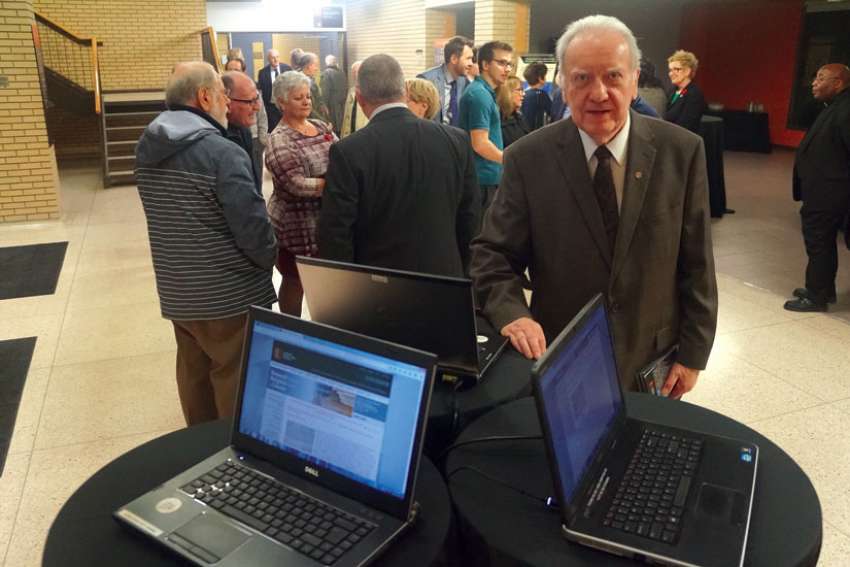Not even in the Vatican secret archives “have we found any document that has fundamentally changed our knowledge of Canadian history in the way that actor Tom Hanks, aka Professor Robert Langdon, discovers — and immediately interprets — in the Dan Brown books,” said Genoa University professor emeritus Luca Codignola, speaking at the Nov. 3 launch of Saint Paul University’s online portal to tens of thousands of documents pertaining to Canada from 1622 to 1922.
“So John Cabot did not make a third voyage to Newfoundland; the Pope did not engineer the cession of Canada, and Bishop Ignace Bourget of Montreal was not a closet Protestant,” Codignola said.
Nevertheless, the inventories reveal new discoveries in the area of Church, religious and Catholic history in Canada, said Codignola, such as the presence of more than 60-63 Capuchin missionaries in Acadia during the years 1639 to 1656, “a very large number for such a small population.”
A similar number of Jesuits, who are much more famous, were in Acadia and Canada at the same time, he said.
The discovery of the Capuchins offers insights into the relationships of the missionaries with Canada’s indigenous peoples as well as with other missionary orders, Codignola said.
The documents also undermine the perception that Roman documents were formal in nature and therefore uninteresting, Codignola said. For example, the appointment of Quebec’s first Bishop St. Francois Laval was the subject of much discussion in Rome before the decision was made. Among the considerations: would Rome or Versailles be in charge of Canada; was a new bishop needed; was Laval the best candidate; who would pay for registering the Papal Bull and supporting the new bishopric?
The Roman archives contain vast amounts of information on so-called mixed marriages involving either an Aboriginal and pagan partner or a Protestant wife or husband, he said. Priests would send requests to the Holy Office also known as the Holy Inquisition for a decision. He gave an example of the process for obtaining marriage dispensations.
“A man and a woman wanted to marry but the couple presented some impediments,” he said. The priest reported to the bishop who reported to Rome, where the Congregation of Propaganda Fide, in charge of Canada until 1908, would forward the case to the Inquisition for a decision. If the Holy Office replied, the correspondence would follow the same chain of command back.
“When Rome’s decision was eventually communicated to the interested parties two or three years later, the couple had been living in sin for a long while, had produced a number of illicit offspring, and had no intention to separate,” Codignola said.
“What was the parish priest to do except to ask that an exception be made.”
The Vatican Archives and Canada project can be accessed through the Saint Paul website at ustpaul.ca/RCRHC.


